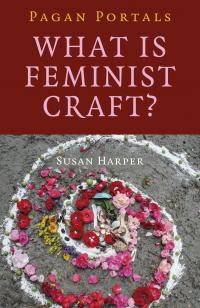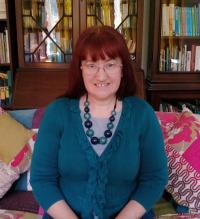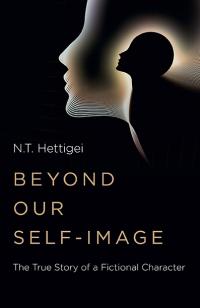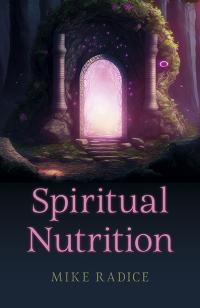

October in the Wheel of the Year: Samhain, Halloween and Mischief Night - By Lucya Starza
October 31st is a major Wheel of the Year festival for modern pagans, whether you call it Halloween, Samhain or anything else. I live in England, and a few traditional customs that are similar to Halloween take place in October in my country, but their origins are unclear.
Mischief Night
Mischief Night has been celebrated at different dates in various parts of England, sometimes on April 30th but in some places on October 31st or early November. It’s a time for playing pranks, rather like trick or treat. Steve Roud, in The English Year, writes: “The history of Mischief Night continues to puzzle folklorists” but he adds that although “some writers have assumed an ancient pagan origin for the custom…there is no evidence that this is the case.” The first documentary record dates from the 1830s, but it’s likely to have happened earlier.
Punkie Night, Pumpkins and Turnips
In parts of Somerset, Punkie Night is the last Thursday of October. Children go from door to door with Punkies, which are lanterns made from hollowed mangel-wurzels - a large root vegetable used as cattle feed. They also demand gifts with the rhyme:
It's Punkie Night tonight
It's Punkie Night tonight
Adam and Eve would not believe
It's Punkie Night tonight
Give me a candle, give me light
If you haven't a candle, a penny's all right.
It's Punkie Night tonight.
Pumpkins are better known as being made into lanterns these days. When I was a kid pumpkins weren't easily available in Britain. Most people who celebrated Halloween carved turnips and swedes instead.
Halloween and Samhain
Halloween in its current aspect is, of course, a hugely commercialised event in Britain and more so in the United States. I find good and bad things in this. I hate the shelves of plastic tat in some shops, with too many shoddy things that’ll end up in landfill. It’s terrible for the environment and a waste of cash. But there are also brilliant things to be found, from bowls and cauldrons for scrying to black candles, which are hard to get except from specialist suppliers at other times of year. So, as a witch, I look to October as a great time to stock up on supplies.
Many pagans prefer to celebrate Samhain, but the difference between Halloween and Samhain is a topic that easily get rows going. Is Halloween pagan or Christian? Is Samhain the origin of Halloween or a separate festival at the same time of year? On the face of it, Halloween is the night before the Christian festival of All Hallows Day on November 1st, which celebrates saints. It’s followed by All Souls Day on November 2nd, which honours the dead. But with Halloween’s ghost stories, dressing up, trickery and maybe a bit of magic, it doesn’t really seem Christian. It seems pagan.
Back in the 20th century, many people looked at Halloween and thought they detected a festival that was ancient and pre-Christian. They looked further and saw a description of the old Irish Samhain, said to mean "the end of summer" and celebrated as a fire festival. Sir James Frazer in The Golden Bough had written that Samhain was a pagan Celtic feast of the dead. People put two and two together and it became accepted popular history that the origins of Halloween were in Samhain. A leaflet by the Pagan Federation in 1993 states: “Halloween developed from the Celtic Feast of Samhain.”
Then some eminent historians and folklorists looked further, but couldn't find evidence that Samhain was to do with the dead. Some stated it wasn’t a religious festival, but was more like a secular new year’s eve celebration at the start of winter, in which fires were lit and merriment enjoyed. Evidence that Samhain was celebrated outside Ireland was also scarce, and many historians said Halloween was a different thing altogether. Steve Roud in The English Year stated that Halloween was just a Christian festival dating from the medieval period. He wrote “There is no evidence that this time of year was celebrated in England before the Christian feast was created.” He also wrote that Halloween was to do with the dead, but Samhain wasn’t. They were two different things and not connected.
However, the arguments continued. A brief web search will find that the Catholic Church, under Pope Gregory III, moved All Saints' Day, or All Hallows Day, from May to November in the 8th century. Why was that done? A popular theory is that it was moved to supplant Irish Samhain, but Professor Ronald Hutton in The Stations of the Sun offers evidence that the move was to fit in with dates celebrated in northern European churches, rather than Irish customs. But others have found some connections between Samhain and Halloween. Most recently Luke Eastwood, in Samhain: The Roots of Halloween, searched for archaeological, historical, folkloric and literary evidence that ancestors and otherworldly beings were honoured at Samhain in Ireland, and traced ways Irish people carried their traditions to other parts of the world, to mingle with Halloween customs.
I’m convinced the arguments will continue, but I don’t think that matters. Many modern pagans prefer to call this Wheel of the Year festival Samhain, because of its pagan heritage, while others enjoy going to Halloween parties for fun and games. Whatever you call it, you don’t have to do exactly what your ancestors did unless you’re a strict reconstructionist.
The Thinning Veil
At this time of year, when plants are dying and the nights are getting dark cold, it’s easy to believe that the veil between the worlds is thin, to see ghosts in the autumn mists and hear otherwordly sighing in the winds, whatever the history books tell us. Most cultures have some sort of festival for the dead. October 31st is certainly a good a time for modern pagans in the northern hemisphere to honour those who have died and try to contact the spirits of ancestors for wisdom or comfort.
The easiest thing to do is to set up an ancestor altar. That can be a table or a shelf. On it put photographs of your ancestors or other mementos of them. You can put flowers there, and light candles and incense. Spend some time by your altar and talk to your loved ones as though they are present, then sit in quiet contemplation to listen for replies or messages.
Dumb suppers are special meals at which a chair and place setting are left for an ancestor’s spirit to occupy while everyone else dines around the table. A candle is lit and the ancestor invited to join the living for the meal. Everyone eats in reverential silence until the very end.
As I mention in my book Pagan Portals – Scrying, Halloween is a traditional time for all forms of divination. Scrying means looking into something in the hope of finding messages or visions. It’s often thought of as crystal ball reading, but can also mean looking into bowls of water. Witches may use a cauldron and scry by candlelight or moonlight. This is always part of the work at Samhain in covens I’ve been a member of. We’ve used the technique to contact loved ones who had passed. You could also get out tarot cards or try one of the old fortune telling games, such as putting two nuts near a fire and asking a yes or no question. The nut that bursts first supposedly gives you the answer.
If you’ve made contact with spirits at Halloween or any other time, always thank them and say goodbye to them at the end of your session. Then make sure you are fully grounded. That can be done by having something to eat or drink.
This is the tenth in a series of posts I’m writing for the Moon Books Blog on the theme of the Wheel of the Year. My posts will be compiled and edited into a book: Pagan Portals – Wheel of the Year. Other books by Lucya Starza in the Pagan Portals series include Candle Magic, Guided Visualisations, Poppets and Magical Dolls, and Scrying. Lucya edited the community book Every Day Magic – A Pagan Book of Days.
Categories:
0 comments on this article







